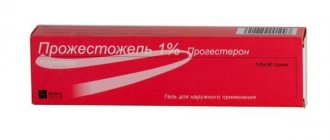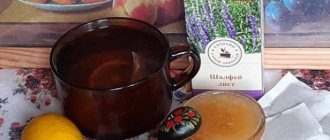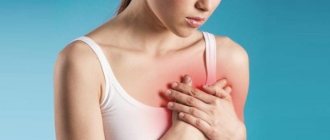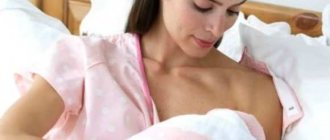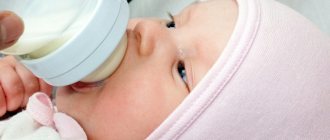Mastitis is a problem for many breastfeeding mothers. The causes of this disease are streptococci, staphylococci and other pathogens that cause inflammatory processes. Acute mastitis can occur when these pathogens enter the breast through the milk ducts or cracks in the nipples during lactation. By the way, this disease can develop not only in nursing mothers. In medicine, there are cases when this disease affected women during pregnancy.
The process of mastitis
When pathogenic microorganisms penetrate through the wound surface of the cracks into the lymphatic vessels located in the thickness of the nipple tissue, they spread further throughout the mammary gland. It should be noted that infection can get into the chest not only in this way. Chronic infectious pathologies present in the body of a young mother can also cause the development of mastitis. These include inflammation of the tonsils (tonsillitis), soft tissues of the tooth (pulpitis), and paranasal sinuses (sinusitis).
What is mastitis, signs and symptoms
Various factors can provoke it. Women are more often susceptible to the disease during breastfeeding. Mastitis develops due to microbes, most often staphylococcal or streptococcal. During the feeding period, congestion may occur in the mammary glands of women due to incomplete emptying of the breasts - lactostasis.
Another way the disease appears in young mothers is insufficient expression of milk and its stagnation in the ducts. At the same time, pathogenic microorganisms have a good nutrient medium for development, which leads to mastitis.
Mastitis or lactostasis?
You can never rule out the possibility that mastitis will develop in a nursing mother. Treating it can be quite difficult. But numerous traditional methods of treatment, based on many years of experience, help to quickly alleviate the condition of patients.
Mastitis is quite often confused with a disease similar in symptoms to lactostasis. These are two different diseases. Lactostasis is observed in the form of blockage of the milk ducts, which is preceded by an incorrect or insufficient process of emptying the breast. Moreover, in the case of such a situation, non-infectious mastitis may develop. In this case, the woman’s general well-being immediately deteriorates to such a state that emergency medical attention may be required.
Traumeel
Traumeel has a strong anti-inflammatory and analgesic (in other words, analgesic), anti-exudative, regenerating and hemostatic effect.
This medicine can be used not only in the initial stages of treatment of mastopathy, but also in the postoperative period. Traumeel is available in the form of tablets, ointment, gel or solution.
Moreover, various variations of the medicine can be used to treat mastopathy.
Please note: the anti-exudative effect is aimed at preventing high vascular permeability and the release of fluid (exudate) into the tissue.
A contraindication to the use of the drug is individual sensitivity (intolerance) to the plants included in the drug.
How to treat mastitis with folk remedies: warnings
Today, traditional medicine is quite popular. In many cases, remedies prepared at home give positive results in the fight against many ailments.
But there is often a risk of worsening the patient’s condition with the thoughtless use of questionable prescriptions. For this reason, prior consultation with a doctor is required before starting self-medication in order to avoid unforeseen negative consequences. It may turn out that the help of exclusively official medicine is needed.
As for a disease such as mastitis, treatment with folk remedies in some cases actually speeds up the healing process. They can also help prevent illness. However, it should be remembered that it is also not worth excluding the possibility of causing harm when using this method of treating mastitis.
Main reasons
Some of the causes of mastitis include:
- infections, such as streptococcal or staphylococcal bacteria;
- stagnation of milk, which occurs after its abundant appearance;
- any disturbances in milk flow, etc.
Mastitis can develop into acute and chronic forms, so its timely treatment will allow you to avoid many problems. There are various tablets, capsules, ointments and gels that provide comprehensive therapeutic care for the treatment of mastitis. We will consider the most popular options for external use below.
Prohibited method of treating mastitis
Under no circumstances is it permissible to use warming of the mammary glands for this disease. This can only make mastitis worse. Treatment with folk remedies in the form of hot compresses or lotions will create favorable conditions for the accelerated proliferation of pathogenic bacteria. This will cause the disease to begin to progress. The warming method is sometimes recommended by experienced mothers and grandmothers, not realizing that it can only improve the condition with lactostasis. Applying hot herbal decoctions and other mixtures will help relieve the symptoms of mastitis on the outside of the chest. This can be taken as a positive effect of treatment, but the procedure will affect the source of infection in the manner indicated above.
At the slightest suspicion of mastitis, heating the mammary glands should be categorically avoided.
Vishnevsky ointment
Vishnevsky's liniment is characterized by antiseptic properties and is used to heal wounds and ulcers, including effectively helping with inflammatory processes.
Vishnevsky's liniment compresses are made as follows: a little ointment must be applied to the skin and covered with a moisture-proof bandage on top. This medicine is considered the most popular for the following reasons:
- it is inexpensive;
- widely known;
- has excellent anti-inflammatory properties.
In what cases is it strictly not recommended to use Vishnevsky ointment:
- You should not use the ointment to treat mastopathy if you have an allergic reaction to one of its components. To do this, before using the drug, it is necessary to perform an allergy test: apply a little ointment to the inside of the forearm. If after 10-15 minutes there is no itching, pain or redness of the skin, you can use the product.
- Particular attention should be paid to the stage of development of the disease. You should never use Vishnevsky ointment if pus appears deep in the breast tissue. After all, this will only worsen the inflammation and can even lead to death. Whereas with infiltrate and abscess located at a shallow depth under the skin, the ointment will only stimulate the release of pus.
- Nursing mothers should not use the ointment, as it has a very strong smell and the baby may simply refuse to breastfeed, which will bring additional problems.
Only a doctor has the right to prescribe Vishnevsky’s liniment for the treatment of mastopathy. After all, its spontaneous use, especially in advanced stages of mastitis, can lead to irreparable consequences.
Effective folk remedies for mastitis
To improve the condition of a sick woman breastfeeding a child, the following folk remedies for mastitis are used.
Rice lotions
To significantly alleviate the patient’s condition, rice starch diluted with water (until the consistency of thick sour cream is obtained) should be applied to the chest. The improvement becomes clearly noticeable a couple of hours after the procedure.
Fresh vegetables
In order to reduce lumps in the breast during mastitis, it is recommended to apply leaves of fresh coltsfoot or cabbage to it. You can also use grated carrots. You can secure the products with a bandage or bra (if this does not cause discomfort or pain). These products can stop inflammatory processes.
Herbal medicine for diseases
Mastitis is a disease that has been familiar to women for a very long time, so in alternative medicine there are many ways to combat it at home using folk remedies. Some medicinal herbs, taken orally in the form of decoctions, reduce inflammation and lactation.
- Sage. The herb contains substances that stop lactation, beneficial acids and a strong antibacterial substance, coumarin. All parts of this plant are indispensable for those forms of the disease when breastfeeding is impossible. The drink is prepared very simply: 1 teaspoon of herb is poured into a glass of boiling water. After an hour, the infusion is filtered and drunk. The formation of milk and the source of inflammation disappear after a week of taking this remedy.

- Medicinal chamomile. This plant is even recognized by traditional medicine; it is prescribed when it is necessary to treat an infection with mild means. For mastitis, chamomile is used as a raw material for compresses. Pour a glass of boiling water over 2 tablespoons of the crushed plant. After half an hour, strain and cool. Moisten a cotton cloth with the infusion and apply it to the sore mammary gland. It is better to do the lotion at night.
- Alder. The leaves of this tree are an excellent remedy for mastitis. You can prepare an ointment from them at home. To do this, you need to fill a small glass jar with fresh leaves and pour melted butter. Next, you need to close the container with a lid and lower it into boiling water. After 20 minutes of simmering, the product is ready. The ointment is applied to the mammary gland several times a day.
Compresses for mastitis: rules of use
Compresses are the main method of traditional medicine to get rid of this disease. They are able to relieve a woman of nagging pain and a feeling of “bloating” in her breasts. The basic principle of using compresses in this case is the exclusion from the list of components used of dangerous substances that can be used either unknowingly or consciously.
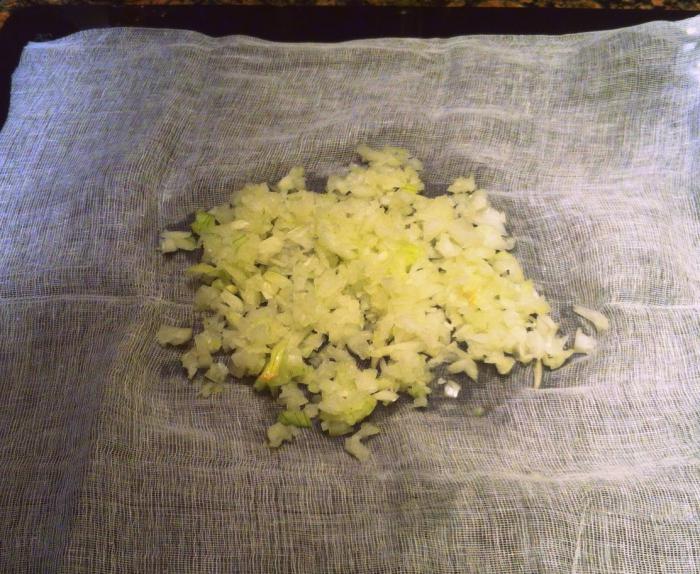
As mentioned above, it is strictly forbidden to warm the breasts during mastitis. That is, compresses for mastitis should be applied warm or cool, but not hot. You should be aware that there is an inflammatory process in the mammary glands, and heating will only worsen the situation.
Ichthyol ointment
Ichthyol ointment has a disinfectant, antiseptic and anti-inflammatory effect.
It helps to soothe soft tissues and reduce pain, including itching. If we talk about the treatment of mastitis, then this drug most likely refers to traditional medicine. After all, its action is targeted, eliminating the saturation of the entire organism.
Restrictions on the use of ichthyol ointment:
- The medicine should not be used to treat children under 12 years of age.
- It is mandatory to carry out an allergy test for intolerance to individual components of the drug before using it.
- When treatment is performed on nursing mothers, they should definitely be warned about the following: before breastfeeding the baby, the area of the areola and nipple must be thoroughly wiped with warm water to completely wash off the ointment from the skin of the breast.
Compress of honey and cottage cheese
What other foods can stop mastitis? Treatment with folk remedies can be carried out using cottage cheese and honey. A compress with these components should be applied to the chest overnight. It is required to apply a layer of honey onto a gauze or sterile fabric napkin, followed by cottage cheese. To prevent the product from leaking, you can place a piece of wax or compress paper under the material. The compress should be applied to the sore chest (a layer of cottage cheese to the skin). To be secure, it should be secured with a bandage. After removing the compress, the breasts should be rinsed with water at room temperature.
Compress made from plantain seeds
To prepare a healing remedy, you need to thoroughly crush the plantain seeds and combine them with water at room temperature. It is recommended to apply the resulting paste to the sore breast for mastitis. The product works much more effectively if you prepare it on the basis of potato or rice starch, which must first be diluted with water to obtain the consistency of thick sour cream.
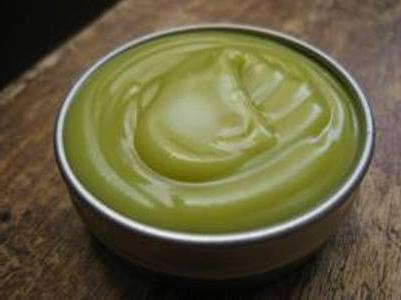
Herbal ointment for treating mastitis
To prepare the ointment, you need to combine Japanese sophora, globulus eucalyptus, and medicinal clover (in equal parts). The resulting mixture in the amount of three tablespoons should be mixed with boiling water (200 ml is enough) and boiled for 5 minutes. Then the product needs to be cooled and strained. Add 100 grams of butter to the resulting broth. The prepared ointment for mastitis is applied using tissue napkins to the chest (both on the affected areas and on healthy ones).
The best external medicines to eliminate mastitis
If the presence of mastitis is confirmed, doctors prescribe complex therapy with drugs of various forms, including external use:
Today, modern pharmacy offers a variety of external treatment products with effective therapeutic capabilities:
- Vishnevsky ointment.
- Ichthyol.
- Traumeel.
- Pikhtoin.
- Levomekol.
- Dexpanthenol.
- Heparin.
- Heliomycin.
- Bepanten.
- Syntomycin.
Let's analyze the therapeutic capabilities of medications in this category, and which of them are considered the best.
Vishnevsky ointment

In pharmacies, this ointment for mastitis is sold under the name “Balsamic Liniment according to Vishnevsky.” Thanks to its thick and soft structure, the product easily spreads over the skin and is quickly absorbed into the inner layers of the chest structure. The medicine exhibits anti-inflammatory and other healing effects.
The medication contains:
| Components | Treatment characteristics |
| Birch tar | Provides insecticidal and antiseptic capabilities. Improves blood flow in the chest area. Accelerates the regeneration of damaged epithelium. |
| Xeroform (powder) | Synthesized chemical component (bismuth tribromophenolate). It has antibacterial and anti-edematous, drying and healing properties. |
| Castor oil | The base component of many ointments. Shows a softening effect. |
For mastitis, Vishnevsky ointment must be applied several times a day, provided that there is an open or visible abscess under the skin. The remedy helps to break through the abscess, but if the inflammatory suppuration is too deep in the chest, the medicine will not only be ineffective, but may even worsen the situation.
A contraindication for the use of this drug is individual intolerance to its components and mastopathy, since this disease is characterized by the formation of cystic cavities with a liquid substance inside, and not pus. The use of Vishnevsky ointment for mastopathy can lead to the degeneration of connective tissue, as a result of which the diffuse form of the disease becomes nodular, which is fraught with serious consequences, including the manifestation of cancer cells.
The average cost of Vishnevsky ointment is 40 rubles.
Traumeel

Traumeel ointment has homeopathic characteristics and is prescribed for various inflammations, including mastitis. Shows the following therapeutic possibilities:
- Increases immunity.
- Removes toxins.
- Improves blood circulation.
- Eliminates swelling and hemorrhage by improving lymphatic drainage.
According to the instructions for the drug, the ointment must be applied to the problem area 2-3 times a day.
| Composition of the drug | Therapeutic options |
| Echinacea | Has an antiseptic effect. |
| Witch hazel | Relieves irritation. Eliminates redness. |
| Calendula | Renews and restores cells. |
| Arnica | Shows a general strengthening effect. |
| Calendula | It has renewing and restorative capabilities. |
| Comfrey | Improves the quality of blood circulation. |
The medication does not exhibit any side complications; when used, it does not harm the baby, since it does not penetrate into the blood fluid and breast milk, therefore it can be used during lactation.
The average cost of the product is from 550 rubles
Ichthyol ointment
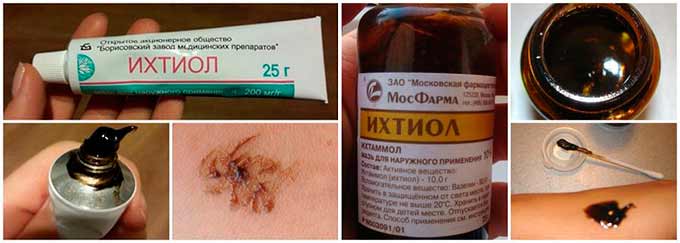
This drug is considered one of the most effective means for external use. Ichthyol ointment is prescribed for the formation of inflammatory foci in the mammary glands.
The active component of the drug is the substance Ichtamol, which has the following therapeutic properties:
- Anti-inflammatory.
- Analgesic.
- Antipruritic.
- Antiseptic.
- Healing.
- Calming.
The medication effectively eliminates congestion in the breast, relieves painful discomfort and effectively relieves swelling. When applied to the problem area, it instantly penetrates into the deep layers of breast tissue and directly affects the inflammatory focus.
The frequency of use of the product is 1-2 times a day, if necessary, a bandage is applied.
Breast massage to get rid of lumps
With the help of a special massage for mastitis, you can soften already formed nodes in the chest. Also, these actions will contribute to the evacuation of milk from clogged glands. It is necessary to carry out massage during mastitis, making movements in the direction from the peripheral zone to the nipple.
Before starting the massage, it is recommended to slightly relax the formed knots. They must be smoothed with spiral movements made clockwise. This preliminary effect on areas of stagnation in the breast tissue must be carried out for 40 seconds.
This is followed by the main massage. If during the procedure the pain intensifies and becomes unbearable, then the procedure is recommended to be carried out in water of medium temperature, under the shower.
Levomekol
Levomekol is a medication characterized by anti-inflammatory and strong antimicrobial effects.
It should be used locally, directly at the site of inflammation. This is a real “thunderstorm” of staphylococci, streptococci and other groups of microbes and bacteria. That is why Levomekol is perfect in the fight against mastitis.
Due to its regenerating effect, this drug is often prescribed postoperatively. The regenerating effect is aimed at improving blood flow in tissues, including stimulating metabolic processes in them.
Prevention of mastitis
Such an unpleasant disease as mastitis of the mammary gland can be completely avoided if you follow some simple rules, namely:
- After feeding the baby, milk must be expressed carefully.
- Before giving your baby the second breast, you need to completely empty the first one. This is a prerequisite to prevent the development of mastitis.
- If the baby has enough milk from one breast, the next feeding should be done with the other.
- The process should be controlled. The baby should not just suckle at the breast, but receive milk from it.



